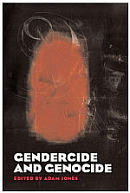Published on Tuesday, October 30, 2007 by Inter Press Service by Zofeen Ebrahim
HYDERABAD, India - Experts at the 4th Asia Pacific Conference on Reproductive and Sexual Health and Rights are painting an apocalyptical vision of the Asian region where 163 million women are ‘missing’ and the sex ratio continues to decline as a result of easy access to modern gender selection techniques.
China tops the list of countries with a skewed sex ratio at birth (SRB) with just 100 females for every 120 males. India follows going by the country’s 2001 census, which revealed that the SRB had fallen to 108 males per 100 females.
Experts worry that unless action is taken, Nepal and Vietnam may soon have skewed SRBs. Countries like Pakistan and Bangladesh are already beginning to follow Asia’s largest countries with people resorting to medical technology to do away with the girl child at the foetal stage.
“We place it (skewed SRB) in the context of discrimination against women,” said Purnima Mane, deputy executive director UNFPA, while addressing the press. “Women are not valued.” She predicted that a continuing unhealthy SRB trend could lead to increased violence, migration and trafficking as well as greater pressures on women.
“When there is no economic recognition to women’s work and no social value attached to this particular gender, when resource sharing remains inequitable, when women are paid less then it becomes easier to do away with this gender,” said Renuka Chowdhry, India’s junior minister for women and child development, at the inaugural of the Oct 29-31 conference.
She called for increased women’s political participation and a push for laws and legislations that empower them as remedy to the adverse sex ratio. ‘’Don’t mess with nature, otherwise it will lead to a mutation of society,” she warned.
But where have all the girls gone? The sobering answer to the unbalanced SRB, according to the latest series of studies commissioned by the United Nations Population Fund (UNFPA), lies in modern gender determination and selective abortions.
French demographer Christophe Guilmoto, author of the UNFPA’s regional report ‘Sex ratio Imbalance in Asia,’ based on studies conducted in China, India, Nepal and Vietnam and presented at the conference, referred to it as ‘gendercide’ in which millions of parents resort to a variety of techniques to ensure male offspring. Choosing gender had become easy with the arrival of amniocentesis in the lae 1970s and later with ultrasound imaging technologies.
In 2005, the estimated overall sex ratio was 107.5 males per 100 females in India, as against 106.8 in China, 106.0 in Pakistan and 104.9 in Bangladesh — four countries that accounted for 43 percent of the world’s population in 2005.
The underlying reasons for the abnormal sex ratio in China, explained Baige Zhao, vice minister of that country’s National Population and Family Planning Commission, included the age-old bias for sons, a poor social security system in rural areas and a trend for smaller-sized families.
The draconian one-child policy imposed by China’s government at that time and the high cost of child rearing provided just the climate for abusing modern technology.
In India, discrimination against girls is more intense among urbanites and well-to-do families, while similar data from China indicate that sex selection appears more pronounced among peasants than among urban residents. In both India and China, education tends to be positively associated with discrimination against the girl child.
Perhaps that is why Gillian Greer, director-general at International Planned Parenthood Foundation, laid particular emphasis on “real investment in girls’ education” as a critical driver of development if they are to be saved from becoming “invisible and forgotten”.
Interestingly Pakistan — where abortion is illegal and unsafe abortions rampant — does not yet have a sex selection problem. “The fewer studies that have been carried out all point to the fact that sex selective abortion is very rare. This could be because we have not been deluged by technology as in other countries in the region,” explained Dr Yasmeen Sabeeh Qazi, country representative, the David and Lucille Packard Foundation, Pakistan.
Pakistan also benefits from positive religious beliefs. ‘’One cannot ignore that such deeds (selective abortions) are considered sinful with great misfortune befalling those who commit such deeds. One of the commonest teachings of Prophet Mohammad, with which all Pakistanis are familiar, relates to not burying daughters alive (a practice in Arabia before the advent of Islam).”
The social ramifications of these private decisions will end up affecting everyone and a ‘masculinisation’ of Asia, predict specialists. There will be a vast army of surplus males causing a ‘marriage squeeze’ with the most underprivileged the worst off. With fewer women of marriageable age, men will have to delay marriage; it may also lead to a backlog of older unmarried men.
However, say experts, it is still not late to turn around the numbers. South Korea, after a period of 25-30 years, has brought back its SRB to normal levels through self-regulatory mechanisms and economic change. The South Korean government also contributed significantly to this.
The UNFPA study recommends keeping an eye on the private health sector which has played a major role in spreading gender selection technology, and a strict regulation of sex-determination procedures.
Many countries already have tight regulations. India started as early as 1983, followed by South Korea in 1987 and China in 1989. Nepal banned sex-selective abortions in 2002 when it liberalised its own law on abortions. But these laws have proved extremely difficult to enforce. India’s Pre-Conception and Pre-Natal Diagnostic Technology Act of 1994 prohibited both the use and advertising of gender determination techniques, but remains largely ignored. Reducing sex-ratio imbalances is better achieved through advocacy, sensitisation and awareness-raising programmes says the UNFPA report. “By targeting special groups, such as health personnel, young women and students,” people’s mindsets and attitudes towards girls can be changed.”
“The role of girls and women (in society) needs to be applauded,” suggested Guilmoto.
“Supporting girls or those families that only have girls can take many forms — direct subsidies at the time of birth, various scholarship programmes, gender-based quotas or financial incentives aimed at improving their economic situation,” UNFPA recommends in its report.
Subscribe to:
Post Comments (Atom)












No comments:
Post a Comment